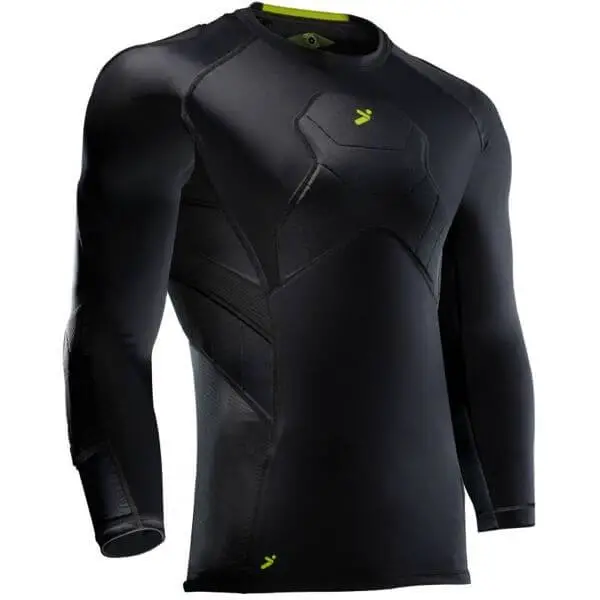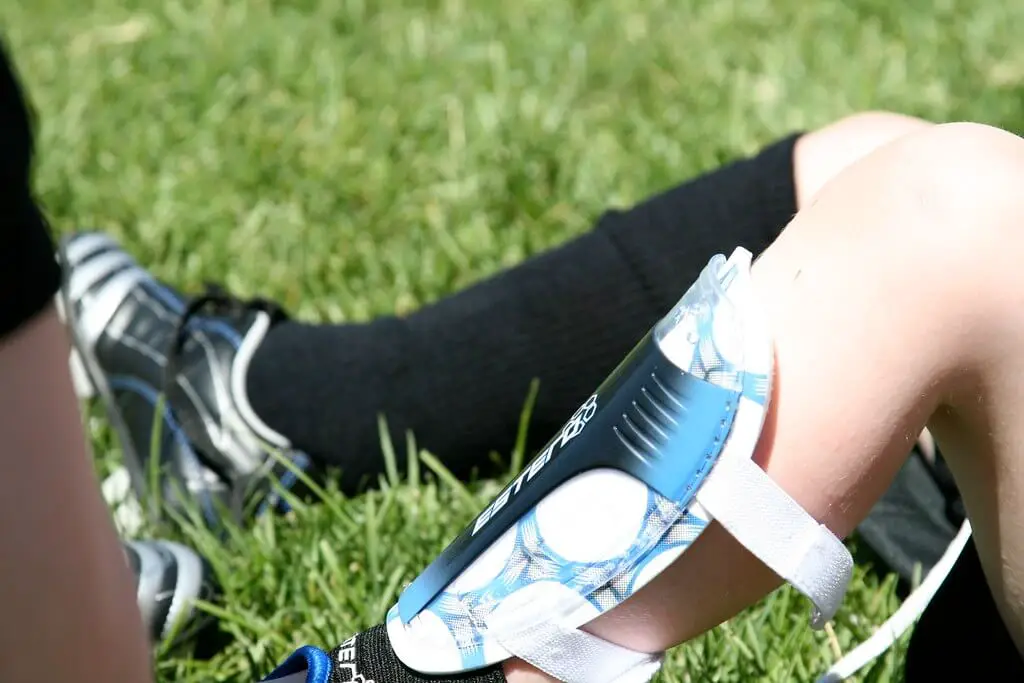As a soccer goalkeeper, your primary job is to stop goals from the opposing team. However, protecting yourself is equally important, and that’s where goalkeeper protective gear comes in.
In this article, we’ll explore the different types of protective gear available for soccer goalkeepers, why they are important, and how to choose the right gear.
Let’s get started.
Why is Protective Gear Important for Goalkeepers?
Soccer goalkeepers are at a higher risk of injury than any other player on the field. The nature of the position requires them to make split-second decisions and quick reflexes that can result in collisions with other players or the ground.
The goalkeeper’s hands and face are particularly vulnerable, making it essential to wear protective gear.
Goalkeeper protective gear is designed to absorb impact, prevent cuts and bruises, and minimize the risk of injury.
Investing in high-quality gear can save you from severe injuries and keep you on the field for longer.
What are the Protective Equipment of Goalkeepers?
1. Gloves
Goalkeeper gloves are arguably the most crucial piece of protective gear for a goalkeeper. They protect your hands and fingers from the impact of the ball and can help you make better saves.
They also improve your grip on the ball, which is crucial for catching, throwing, and punching the ball away.
When choosing gloves, look for ones with thick padding on the palms and fingers. The padding should be made of durable materials like latex or foam, which can absorb impact and protect your fingers from sprains or fractures.
2. Body Armor

==>> You like this Armor? Get it here!
Body armor is a padded shirt that fits tightly to your body and provides extra protection to your chest, ribs, and shoulders.
The padding can absorb impact and reduce the risk of bruises, cuts, or fractures.
Body armor is especially important for goalkeepers who play in a more physical league or competition.
When you are choosing body armor, look for those with thick padding on the chest and shoulders.
The padding should be made of lightweight materials like EVA foam, which can absorb impact without adding too much weight.
3. Knee and Elbow Pads
Knee and elbow pads are essential for goalkeepers who frequently dive or slide on the ground. The pads can absorb the impact and reduce the risk of scrapes or bruises.
They also provide extra support to the joints and muscles, which can reduce the risk of strains or sprains.
Look for pads with thick padding and a snug fit. The padding should be made of durable materials like neoprene, which can absorb impact and resist wear and tear.
4. Headgear
Headgear is an essential piece of protective gear for goalkeepers. It can protect your head from collisions with other players or the ground and reduce the risk of concussions or other head injuries.
Headgear can also provide extra protection to your forehead, which is particularly vulnerable to cuts and bruises.
You have to look for ones with thick padding around the forehead and temples.
The padding should be made of lightweight materials like EVA foam, which can absorb impact without adding too much weight.
5. Shin Guards

Shin guards are not just for field players. Goalkeepers can benefit from wearing shin guards, especially when defending against corner kicks or free kicks.
Shin guards can absorb the impact of the ball and reduce the risk of bruises or fractures.
When choosing shin guards, look for ones with thick padding and a secure fit.
The padding should be made of lightweight materials like polyurethane, which can absorb impact without adding too much weight.
==>> Also read my article on how you can pick shin guards for soccer here.
How to Choose the Right Soccer Goalie Protective Gear?
Choosing the right goalkeeper protective gear can be overwhelming, given the wide variety of options available. Here are a few tips to help you make the right choice:
- Consider the Level of Protection You Need
The level of protection you need will depend on the level of competition you play in and the frequency of collisions and impacts you face.
If you play in a more physical league or competition, you may need more protective gear than if you play in a casual league. Assess the risks you face and choose gear that provides adequate protection.
- Look for High-Quality Materials
The quality of the materials used in goalkeeper protective gear can affect its effectiveness and durability.
Look for gear made of durable materials like latex, foam, neoprene, EVA foam, and polyurethane.
Avoid gear made of cheap or flimsy materials that may not provide adequate protection or wear out quickly.
- Ensure a Proper Fit
Goalkeeper protective gear that doesn’t fit well can be uncomfortable and ineffective.
Make sure you choose gear that fits snugly and doesn’t move around during play.
Most brands offer size charts to help you choose the right fit.
- Read Reviews
Reading reviews from other goalkeepers can help you get a sense of the quality and effectiveness of different types of protective gear.
Search for reviews from goalkeepers who play in similar leagues or competitions as you and consider their experiences when making your choice.
- Consider the Price
Goalkeeper protective gear can vary widely in price, with some high-end brands costing hundreds of dollars.
While price is not always an indicator of quality, investing in high-quality gear can save you from expensive medical bills or time off the field due to injury.
Final Thoughts
So, goalkeeper protective gear is essential for keeping goalkeepers safe on the field.
Gloves, body armor, knee and elbow pads, headgear, and shin guards are all important pieces of gear that can reduce the risk of injury and keep goalkeepers playing at their best.
When choosing gear, consider the level of protection you need, the quality of the materials, the fit, and the price. With the right gear, you can play confidently and safely, knowing that you are well-protected.
You can also read my top 10 soccer goalie training equipment here!

